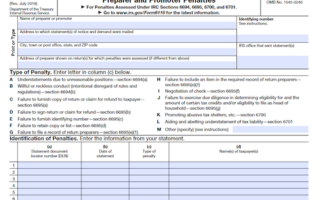For tax purposes, the IRS uses Form 5227 for split-interest trusts to report financial activities, charitable deductions, distributions, and to determine if the trust is treated as a private foundation and is subject to excise taxes. This guide outlines the requirements for filing Form 5227 and who must file.
What is Form 5227?
Form 5227 is used to accurately report the financial activities of a split-interest trust, which includes details about deductions, distributions, donors, and assets contributed during the year. All charitable remainder trusts, pooled income funds, and other trusts which meet the specifications of a split-interest trust must file Form 5227 unless they meet the exception provided. This paragraph provides a brief overview of the definition and types of split-interest trust, in addition to who must file. The use of photographs of missing children, phone help, additional information, and a list of other forms which may need to be filed is also included in the instructions of this form.
IRS Form 5227 – Who Needs to Fill It Out?
Form 5227 must be filled out by all charitable remainder trusts and all other split-interest trusts defined under section 4947(a)(2), unless the trust was created before May 27, 1969 and all transfer of corpus to the trust occurred before then or if every transfer of corpus to the trust after May 26, 1969 were made without a deduction. Recipients of these trust payments must have their beneficiaries and assets reported on schedule A, while the other sections apply to specific types of split-interest trusts such as charitable lead trusts, charitable remainder annuity trusts, charitable remainder unitrusts, and pooled income funds. Foundation managers and substantial contributors to the trust may also be considered disqualified persons for the purposes of the trust.
Step-by-Step: Form 5227 Instructions For Filling Out the Document
Filling out Form 5227 is necessary for all charitable remainder trusts and other trusts that meet the definition of a split-interest trust, as described in sec. 4947(a)(2). Schedules A and B need to be completed for reporting of the financial activities of a split-interest trust, and certain deductions and distributions of or from it. Instructions on the form differentiate the parts which should be completed based on the type of split-interest trust, such as charitable lead trusts, charitable remainder annuity trusts (CRATs), charitable remainder unitrusts (CRUTs), and pooled income funds. Furthermore, certain definitions such as “substantial contributor” and “disqualified person” should be understood when filling out Form 5227, and these can be found within the Instructions section of the form. Assistance filling out the form is also available by phone at 877-829-5500.
Below, we present a table that will help you understand how to fill out Form 5227.
| Information Required for Form 5227 | Details |
|---|---|
| Types of Split-Interest Trusts | Different types of split-interest trusts |
| Schedules A and B | Reporting financial activities and deductions |
| Definitions | Important definitions for Form 5227 |
| Assistance | Where to get help when filling out the form |
Do You Need to File Form 5227 Each Year?
You need to file Form 5227 each year if you are in charge of a split-interest trust, which is defined as a trust not exempt from taxes under section 501(a) that has unexpired interests devoted to purposes other than religious, educational, or charitable, and that has received deductions under certain sections. Most common types of split-interest trusts include charitable lead trusts, charitable remainder annuity trusts, charitable remainder unitrusts, and pooled income funds. You can find more information regarding filing the form and necessary definitions in the instructions above.
Download the official IRS Form 5227 PDF
On the official IRS website, you will find a link to download Form 5227. However, to make it easier for you, we are providing the link in our article, which comes directly from the official irs.gov website! Click to download: Form 5227
Sources:




